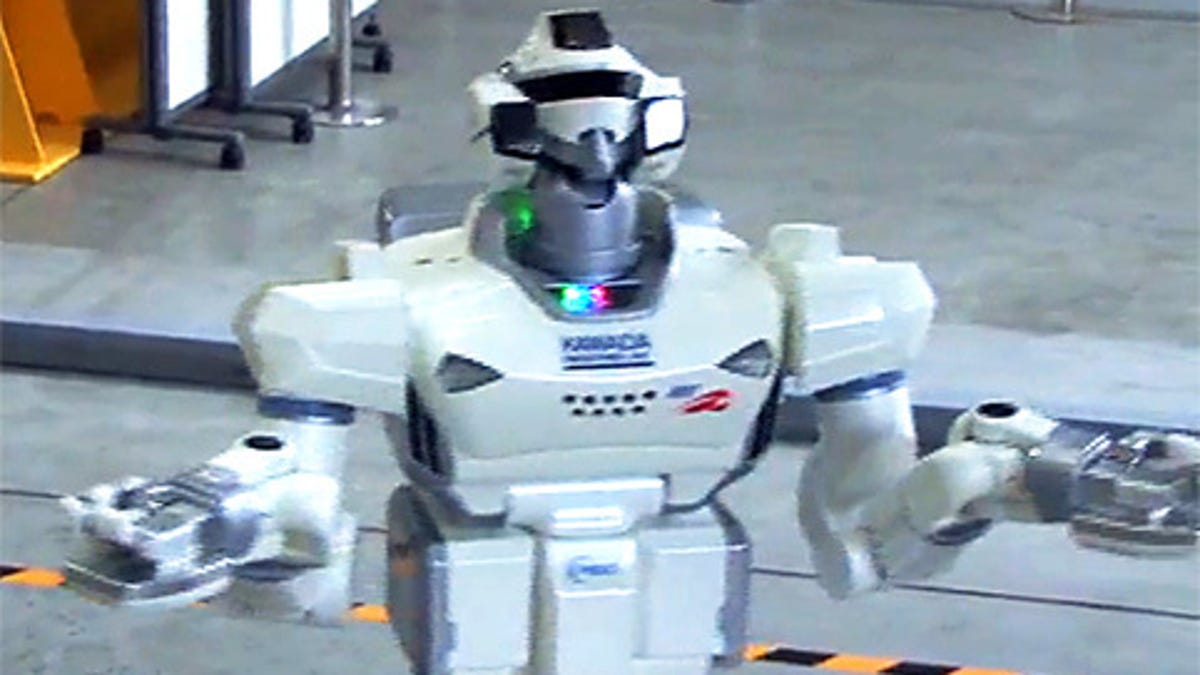Where are the robots in Japan's nuclear crisis?
They're coming from America, not Japan. iRobot sends in PackBots and Warriors to the stricken Fukushima nuclear plant.

Humanoid robots like the HRP-3 were designed in part to work in hazardous places like nuclear plants. Millions have gone into impractical prototypes.
Six workers were exposed to excessive radiation at the Fukushima Daiichi nuclear plant on Saturday as a mile-long power line was connected to Reactor No. 2 in an effort to restore power to its cooling system. Crews hope to restart the system Sunday, The New York Times reported, but meanwhile observers have been speculating how many robots authorities have deployed to keep people out of harm's way.
The answer, apparently, is zero.
RaBot: Another useless prototype?
"I don't know that we have any such devices," said Hiro Hasegawa, a spokesman for plant operator Tokyo Electric Power Company (Tepco), when asked whether robots were being used at Daiichi, which was struck by a tsunami following the 9.0-magnitude earthquake March 11.
It's surprising that Japan, long considered a technological powerhouse, has had to resort to such rudimentary methods of cooling the plant's reactors as water-bombing them with lead-lined helicopters.
Tepco apparently never imagined a situation in which the main and backup power to the coastal plant would be knocked out, despite the fact that Japan is one of the most quake-prone countries in the world, sitting atop a number of shifting tectonic plates.
Japan has invested untold millions in developing all kinds of robots, including machines that can work in hazardous places like nuclear power plants. All too often, they've proved to be expensive but useless prototypes. Tepco only has robots that can inspect reactor shrouds for cracks, according to Hasegawa.
After two workers died and dozens were injured following exposure to radiation in Japan's previous worst nuclear accident, in September 1999 at a JCO uranium reprocessing plant in Tokai, Ibaraki Prefecture, the government said it would develop remote-controlled robots to deal with leaks at nuclear facilities.
It drew inspiration from France's Groupe Intra, created in 1988 to maintain a fleet of robots to work in a major nuclear accident.
iRobot's PackBot 510 is heading to Fukushima.
The precursor to the Japan Atomic Energy Agency came up with several nuke bots, including RaBot, a rolling, double-armed robot that was resistant to radiation and could open and close valves while operating under remote control.
An asset like that might have come in handy at Fukushima, where heroic workers are placing themselves at grave risk to avert a meltdown. But little of RaBot has been seen since 2001. Was it another shelved robot prototype?
In their desperation, Japanese authorities have turned to Massachusetts-based iRobot for help. The Special Ops division of Japan's Self-Defense Forces apparently asked for assistance from the U.S. military contractor, and four robots were en route to Japan Friday, according to IEEE Spectrum.
The PackBots and Warriors can be operated from over 2,000 feet away and could be used in tasks like hauling hoses to help fight fires and measuring radiation levels. iRobot staff will apparently train the Japanese military personnel who will operate them.
It's ironic that robot-crazy Japan has had to ask for outside assistance in this critical area. Let's hope iRobot's battle-tested machines help bring the situation under control.

